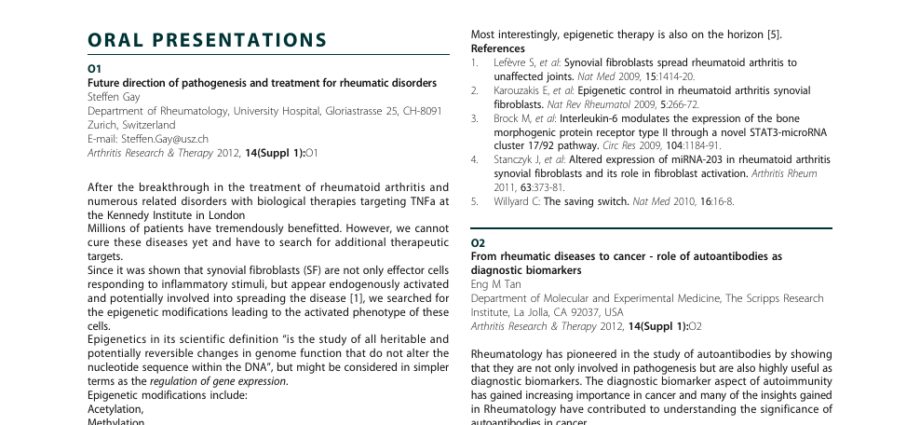Contents
Biotherapies: how to treat inflammatory rheumatism?
Inflammatory rheumatism, such as rheumatoid arthritis, but also ankylosing spondylitis, juvenile chronic arthritis or psoriatic arthritis, affect thousands of people in France. Causing pain and functional disabilities with joint destruction, this rheumatism can have serious consequences. Previously treated only with drugs as a basic treatment, biotherapies have now arrived, allowing better personalized management of this pathology.
What is the principle of biotherapies?
Biotherapies are developed using living organisms, identified by genetic engineering. The researchers thus identified a cytokine (protein of the immune system), TNF-alpha, which acts on inflammatory processes. These biotherapies thus block its action, by two methods:
- monoclonal antibodies inhibit TNF alpha;
- a soluble receptor acts as a decoy and traps this TNF.
To date, there are two antibodies and a soluble receptor available on the market.
What are the possible treatments for inflammatory rheumatism?
In the face of inflammatory diseases, medicine has made significant progress over the past century:
- initially treated with aspirin at the beginning of the 20th century, inflammatory diseases were only moderately alleviated, despite the undesirable effects of aspirin;
- in the 1950s, cortisone made its revolutionary arrival in the treatment of the inflammatory process. With immediate effects on inflammation, however, it does not stop the disease, and has many uncomfortable side effects;
- then, in the 1970s, it was the development of orthopedic surgery which made it possible to treat people with inflammatory rheumatism, by directly operating their often destroyed joints;
- the first basic drug treatments arrived in the 1980s: methotrexate, the same drug prescribed in oncology but in a reduced dosage, was rather effective and tolerated by the majority of patients. It was wrongly thought that this treatment should only be used as a last resort; but the condition of the joints deteriorated during this loss of time, often the first two years. Today, this treatment is applied quickly, at the first signs of the disease, in order to preserve the joints. These drugs have the advantage of being inexpensive: around 80 euros per month for methotrexate, the most effective of them, and effective in a third of patients with rheumatoid arthritis;
- From the end of the 1990s, the drug management of these diseases has evolved significantly with the emergence of biotherapies targeting inflammatory processes, and reputed to be much more effective. Currently fifteen in number, they are 100% covered by Health Insurance.
What are the benefits of biotherapies?
Despite the risks highlighted, the benefits of biotherapies are well established.
While 20 to 30% of patients are not relieved by the drug treatment deemed to be the most effective (methotrexate), it is noted that 70% of patients respond positively to treatment with biotherapy. The negative effects of their inflammatory diseases were considerably reduced:
- tired ;
- pain;
- reduced mobility.
Patients often experience this therapy as a rebirth, when some thought they were doomed to wheelchairs for life.
We also establish a benefit of biotherapies in terms of the risk of cardiovascular diseases: this risk would be reduced by the simple fact of reducing the inflammatory component of the disease. The life expectancy of patients would thus be improved.
Finally, a study published in Lancet in 2008 raised hopes of complete remission of the disease by using biotherapies. The remission rate under methotrexate is 28% and reaches 50% if the soluble receptor is combined with methotrexate. The purpose of this remission under treatment is to be followed by a gradual reduction in medication, before achieving total remission.
What are the risks associated with biotherapies?
However, TNF-alpha is not a cytokine like the others: indeed having a pro-inflammatory role, it also helps fight infections and cancer, by destroying cancer cells. By trapping this molecule, we also weaken the body against the risk of tumors.
These risks have been studied in numerous studies with clinical trials. Taking all of these studies into account, the risk cancerous was measured as doubled or tripled using monoclonal antibodies; and a risk multiplied by 1,8 by using the soluble anti-TNF receptor.
However, on the ground, the truth seems quite different: in the registers of European and American patients followed and treated by biotherapies, such increases in cancer do not occur. Doctors remain vigilant on this point, while admitting a moderate risk but offset by the benefit of biotherapy.
Regarding infections, the risk of severe infection is estimated at 2% of patients per year when the inflammation is onset (less than 6 months). If it is older, the risk is 5%. These results show that biotherapy makes it possible to limit these risks within reasonable statistics.
Controlling this infectious risk involves screening strategies before prescribing an anti-TNF to a patient. A thorough clinical examination, an interview and a series of examinations will thus be necessary (blood count, transaminases, hepatitis serology (A, B, and C), HIV after patient consent, monitoring and updating of vaccinations, history of tuberculosis. ).
Patients must therefore be vaccinated against influenza and pneumococcus before treatment, and make visits one month after the prescription and then every three months, in order to assess the effectiveness of the treatment and the risk of infection.










